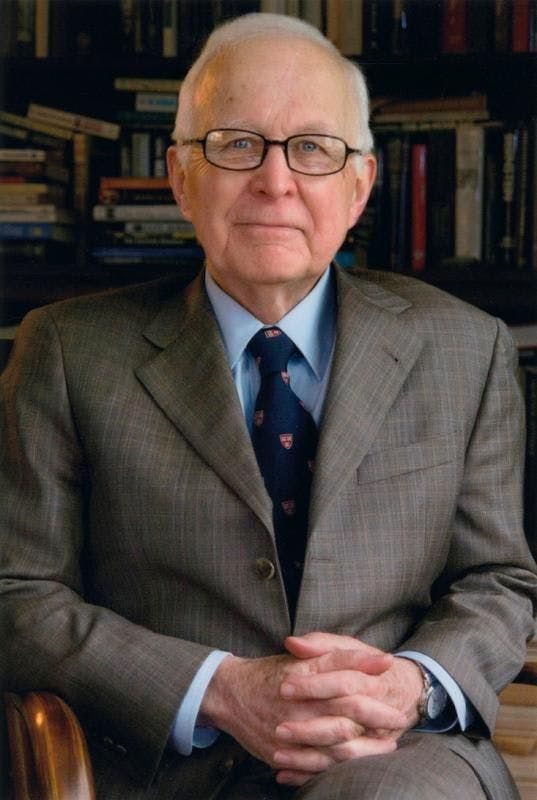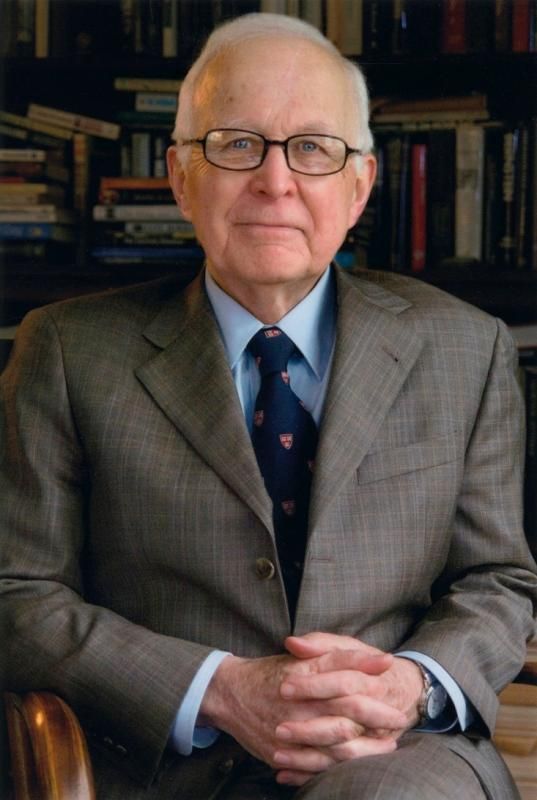What’s Your Orientation – to Practicing Psychotherapy?
Steven J. Ceresnie, Ph.D.
New patients sometimes ask me about my approach or orientation to psychotherapy.
After 45 years of practicing psychotherapy, I say something like, “Some people worry that
‘orientation’ means a rigid method. I draw on different approaches depending on what fits you
best. I hope to create a place where you feel comfortable to talk about whatever is on your mind
without fear of judgment. We will find out together what is helpful to you.”
Although I know there are many approaches to psychotherapy, for me, I think most
approaches fall into these five broad categories:
Psychoanalysis and psychodynamic therapies
Behavior Therapy
Cognitive Behavioral Therapy
Humanistic therapy
Family Therapy
Psychoanalysis or psychodynamic therapy draws from the work of Sigmund Freud and
his many followers who made significant advances to his theories and practice. This therapy
explores the role of the unconscious and past experiences to understand present behaviors,
thoughts and feelings – and learn how these past experiences influence the present. Analysis of
the doctor/patient interactions – the transference - is an important part of learning how past
relationships influence the patient’s present relationships.
Freud’s best idea is the notion of the unconscious mind at war with itself. Freud was a
brilliant writer and was nominated multiple times for the Nobel Prize. He did win the prestigious
Goethe Prize for Literature. Freud’s books, such as, “Civilization and Its Discontents,” takes you
by the hand to travel the logic of Freud’s thinking. He anticipates arguments about his ideas and
offers counterarguments that make the case for his creative descriptions of how the mind works.
The are many ideas in Freud’s theories such as penis envy, the death wish, the stages of
development – oral, anal, phallic and genital – that are difficult to believe and even more difficult
to scientifically test. There is something liberating about Freud’s openness to sexuality –
particularly for those who are sexually marginalized.
In the 1990’s, I was a member of a psychoanalytic study group. The five members of the
group would meet weekly with an experienced psychoanalyst at his home and discuss cases and
read important papers from the psychoanalytic literature. I was convinced about the importance
of unconscious processes, defense mechanisms, and transference. All of the group members,
except me, became psychoanalysts. When I asked my mentor who was a psychoanalyst if I
should become a psychoanalyst, he said, “Do you have that kind of time?”
I decided I didn’t.
Behavior Therapy shuns the workings of the internal mind and focuses on observable
behaviors. The psychotherapist studies the patient’s learning history and modifies the patient’s
behavior applying a sophisticated understanding of classical conditioning, operant conditioning,
and schedules of reinforcement.
John Watson was the American psychologist who first popularized the scientific theory of
behaviorism. Watson and his second wife, Rosalie Rayner, carried out a classic study in 1920 of
“Little Albert.” Watson and Raynor conditioned Little Albert, a 9-month-old boy, to fear a white
rat. They did this by clanging an iron rod when a white rat was presented to Little Albert. First
pairing the clanging of the rod with the sight of the white rat, then showing the rat to the boy
without the clanging, demonstrating the power of classical conditioning.
Watson’s most famous quote is:
“Give me a dozen healthy infants, well-formed, and my own specified world to bring
them up in and I’ll guarantee to take any one at random and train him to become any type of
specialist I might select – doctor, lawyer, artist, merchant-chief and yes, even beggar-man and
thief, regardless of his talents, penchants, tendencies, abilities, vocations, and race of his
ancestors. I am going beyond my facts and I admit it, but so have advocates of the contrary and
they have been doing it for many thousands of years.”
Watson began a second career working in the advertising field for the U.S. advertising
agency J. Walter Thompson. Watson rose up the ranks in his advertising career, earning more
than his academic salary. Watson is credited with popularizing the “coffee break,” during an
advertising campaign he created for Maxwell House coffee.
B.F. Skinner made major contributions to the behavioral approach. Skinner was an
English major at Harvard who wanted to be a novelist. When Skinner was 23 years old, he read
an essay by H.G. Wells about Pavlov. Skinner then attended a lecture by Pavlov. While Pavlov
focused his work on classical conditioning, Skinner concentrated on operant conditioning – the
learning by experiencing the consequences of your actions. Skinner’s major research explored
how operant conditioning could shape behavior in animals and people. Like Watson, Skinner
focused on observable behavior. Skinner increased our understandings of learning mechanisms,
emphasized the power of partial reinforcement (rewards), and how a schedule of reinforcement
that offer rare and random rewards can make a behavior difficult to extinguish – like gambling.
When I started my career, I was excited about the behavior therapy approach and the
many experiments that illustrated the power of classical and operant conditioning. Although,
when I first heard the word “reinforcement” I had the image of round sticky circles stuck to the
pages of my papers in my loose leaf so the holes in the pages wouldn’t tear. I tried applying the
principles of behavior therapy to my psychotherapy work and quickly learned, as my father
would tell me to my dismay, people are complicated. But, not so complicated that people often
unwittingly reinforce unwanted behaviors. Using reinforcement to reward successive
approximations to a goal is a powerful way to shape behavior. Think of your ski instructor ---
giving you positive comments for each step you take making your way down the hill.
Cognitive Behavioral Therapy combines cognitive and behavioral techniques to treat
mental maladies. Early on, I was impressed by Albert Ellis’ book, “A Guide to Rational Living.”
The book presented a sensible guide to help rid ourselves of irrational beliefs and create a path to
mental health. I was reminded of the comedian Rodney Dangerfield who was an expert at
irrational, humorous observations who quipped, “If everybody doesn’t like you, chances are you
haven’t met everybody yet.”
I revised my view of Albert Ellis when I heard him lecture – he was a crass, creative
fellow who rarely missed a chance to make off color comments, such as: “People often say I
must do this, I must do that. These people are musterbaters.”
I felt that Ellis badgered his patients to fit his view about the poison of irrational thinking
causing mental distress. Yet, Ellis’ book, “Guide to Rational Living,” makes a strong case for
CBT and makes a significant contribution the ideas and practices of CBT.
Aaron Beck, a sensitive, gifted therapist with a background in psychoanalysis, is another
pioneer of CBT. He wrote many influential books applying CBT to depression, anxiety, OCD,
substance abuse and schizophrenia.
CBT has accumulated significant empirical support. Not all CBT therapists are like
Albert Ellis. In the hands of sophisticated, sensitive therapists, such as Aaron Beck, the
principles of CBT promote positive change. The patient learns the source of their unconscious
irrational beliefs that contributes to much of their mental maladies.
Humanistic Therapy focuses on self-awareness, personal growth, and self-healing. Carl
Rodgers popularized Client Centered Therapy. Here, the psychotherapist learns to carefully listen
to the underlying feelings of the patient, uses reflective listening as a communication skill where
the therapist focuses on what the patient is saying – including the underlying feelings – and
reflects this understanding back to the patient in the therapist’s words. The goal is to show
empathy, validate feelings, and encourage deeper understanding. This therapeutic, non-directive
approach emphasizes the client’s inherent capacity for growth and healing.
My uncle George went to the University of Chicago when Carl Rodgers was a counselor
there. In his freshman year, George met once with Rodgers for help to choose a major. George
was floundering and had no idea about a career path. I asked George about his meeting with
Rodgers and Uncle George said, “I couldn’t get advice from him, he kept repeating what I had to
say.”
Motivational Interviewing (MI) builds on the work of Rodgers and has four core principles:
1. Resist the righting reflex. Avoid telling people what to do.
2. Understand the patient’s own motivations. Help the person identify his or her values
and goals.
3. Listen with empathy, with an emphasis on reflecting listening.
4. Empower. Connect with the patient’s inner motivations, strengths, abilities and how
they want to accomplish change.
William Miller and Stephen Miller developed MI and describe the theoretical and
practical guidelines of MI in their excellent book, “Motivational Interviewing,” now in its fourth
edition.
I have taught part-time at a dental school for many years. First teaching five students
enrolled in the post-graduate orthodontic program and then teaching undergraduate dental
students. I found MI an effective method to teach dental students communication skills learning
reflective listening. MI offers a structured list of principles and rules to guide students, and
gently confronts the patient’s ambivalence for change. Who is not ambivalent about going to the
dentist?
Family Therapy was a new, exciting therapeutic approach when I worked at a residential
psychiatric hospital for children and adolescents in the 1980’s. This was a time when, for
example, Salvatore Minuchin, a leader in family therapy, was featured in a long, influential
article in The New Yorker titled “The One-Way Mirror,” written by Janet Malcolm. Malcolm
went on to write: “Psychoanalysis: The Impossible Profession.” Jay Haley was another
prominent family therapist. His books include “Strategic Therapy,” “Ordeal Therapy,” and
“Leaving Home.”
I learned the world works in mysterious ways. I was relying on Haley’s book “Leaving
Home” when working with a mother and her 23-year-old daughter, who said she wanted to leave
home. Her mother was a waitress at a hotel near the airport. The mother came to one session
telling me there was a conference on family therapy in her hotel. She said, “I waited on a fellow
named Jay Haley.” Was this a message from God, a coincidence, or something else?
With my hospital colleagues, we formed a group to study and practice the tenets of
family therapy. We brought in an expert consultant in family therapy to discuss our therapy
cases. We would observe each other behind a one-way mirror meeting with an inpatient child or
adolescent with his parents. I thought I was on the cutting edge of a new therapeutic approach
that would make individual therapy obsolete. Unless you see the child with the family, the story
goes, there was no way you get to understand the family dynamics keeping the child the
“identified patient.”
So, early in my private practice, I met with families. What I didn’t know was that to be a
family therapist was to work bartender hours if you wanted to meet with working parents.
My excitement for practicing family therapy dwindled when I met with a child and his
parents for one year in my office. I was silently congratulating myself for my work with this
family – the child improved his school grades, showed improved relationships with his parents,
and made better friends. On the last session, as the family was leaving my office, I overheard the
child’s father say to his mother, “Now that this therapy is over, you think we can start having sex
again?” Oops.
All these psychotherapies mentioned work for some people, some of the time. My
experience teaches me there as many minds as there are bodies.
I like to use humor in my psychotherapeutic work. I have a rule I follow about using
humor: I never use humor with people I don’t like.
Over the years, I keep coming back to a book I read when I started my career. The book
is “Persuasion and Healing: A Comparative Study of Psychotherapy” by Jerome D. Frank, MD,
PhD. (Baltimore: The Johns Hopkins University Press, 1991; The third edition of this book is
available). In this book, Frank makes the case that the effectiveness of psychotherapy is more
about universal elements present in all therapeutic systems, and less about the specific techniques
tied to specific theories of psychotherapy.
Frank claims that successful psychotherapy must achieve four key conditions:
1. An emotionally charged confiding relationship between therapist and patient.
2. A healing setting instilled with cultural authority and legitimacy.
3. A rational or conceptual scheme that explains the patient’s distress.
4. A ritual or procedure consistent with that rationale, followed by patient and therapist.
That there are common factors underlying all theories does not mean a beginning
psychotherapist should not immerse themselves in a theory that fits her temperament and
understanding of human nature. With experience, we all learn to hold our theories lightly and
adjust to the needs of our patients.
Frank offers a trenchant quote about the least common denominators of all therapies:
“…the least common denominator of all therapies, and the one to which their claims to
success must depend on, is the ability to combat a destructive state of mind which characterizes
persons who seek psychotherapy, whatever their specific symptoms. The state may be termed
demoralization…feelings of helplessness, hopelessness, impotence, isolation…Since the
meaning of life derives from the ties of individuals with persons whose values they share,
alienation may contribute to a sense of meaninglessness.”
(To comment on this article contact Dr. Ceresnie at sceresnie@gmail.com)



